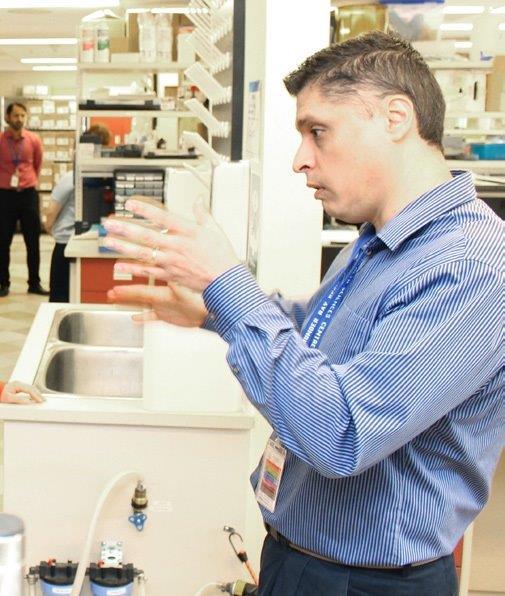Dr. Pichardo Collaborates with SickKids to Develop New MRgHIFU Technique
by Graham Strong
 Dr. Samuel Pichardo, scientist at the Thunder Bay Regional Research Institute, is working in collaboration with the Hospital for Sick Children to develop a new non-invasive treatment method for premature babies to reduce the likelihood and the severity of brain injury, and in fact facilitating collaborations to increase success in imaging. As Dr. Pichardo said, “One day, a baby from Thunder Bay will be treated at SickKids using a technique developed right here. That’s a pretty exciting prospect.”
Dr. Samuel Pichardo, scientist at the Thunder Bay Regional Research Institute, is working in collaboration with the Hospital for Sick Children to develop a new non-invasive treatment method for premature babies to reduce the likelihood and the severity of brain injury, and in fact facilitating collaborations to increase success in imaging. As Dr. Pichardo said, “One day, a baby from Thunder Bay will be treated at SickKids using a technique developed right here. That’s a pretty exciting prospect.”“Collaborations are one of the most important parts of research,” said Dr. Samuel Pichardo, scientist at the Thunder Bay Regional Research Institute.
That statement grows more true every day as technological advances and increasingly specialized expertise is needed to bring new treatments and options for patient care to life. Facilitating collaborations to increase the success in scientific discovery – particularly in imaging – is one of the key objectives for the Research Institute.
Dr. Pichardo’s work is a prime example. As one of the recognized software leaders in the world for magnetic resonance-guided high intensity focused ultrasound (MRgHIFU), he is collaborating with the Hospital for Sick Children (SickKids) to develop a new non-invasive treatment method for premature babies to reduce the likelihood and the severity of brain injury, and in fact facilitating collaborations to increase success in imaging.
“Babies born prematurely are in danger of developing a condition called intraventricular hemorrhage, which can produce blood clots and induce a build up of fluid in the brain,” said Dr. Pichardo.
Usually this condition heals itself, but in some cases it can lead to swelling in the brain or a loss of blood supply to certain brain cells. In both cases, this can lead to brain injury and other medical conditions including cerebral palsy (CP).
Currently, only drainage of cerebrospinal fluid is offered as a treatment and there is not a well established technique for the treatment of the blood clot. A surgical procedure is extremely risky in these infants; since this can lead to brain injury as well, neurosurgeons at SickKids want to find a less invasive treatment method. It was actually Philips Healthcare, the company that supplied MRIs to both SickKids and the Thunder Bay Regional Health Sciences Centre, which connected the two.
Today, Dr. Pichardo is helping to develop technology in Thunder Bay that will safely destroy clots in the brain and reduce swelling without ever having to use a scalpel. If successful, it would mean fewer instances of long-term brain injury – and more happy, healthy babies.
Of course, developing this new technique requires several different steps. One of Dr. Pichardo’s students, Steven Engler, travelled to the Netherlands in the summer of 2015 to help develop new software to improve MRgHIFU imaging for faster, safer treatments in all situations.
As exciting as this research is, there are already plans at SickKids to develop similar techniques for non-surgical removal of brain lesions that can lead to epilepsy, and for destroying neuroblastoma tumours – one of the most common childhood cancers – in combination with radiation, surgery, or chemotherapy.
That expertise is being developed right here at our Research Institute.
“One day, a baby from Thunder Bay will be treated at SickKids using a technique developed right here,” Dr. Pichardo said. “That’s a pretty exciting prospect.”